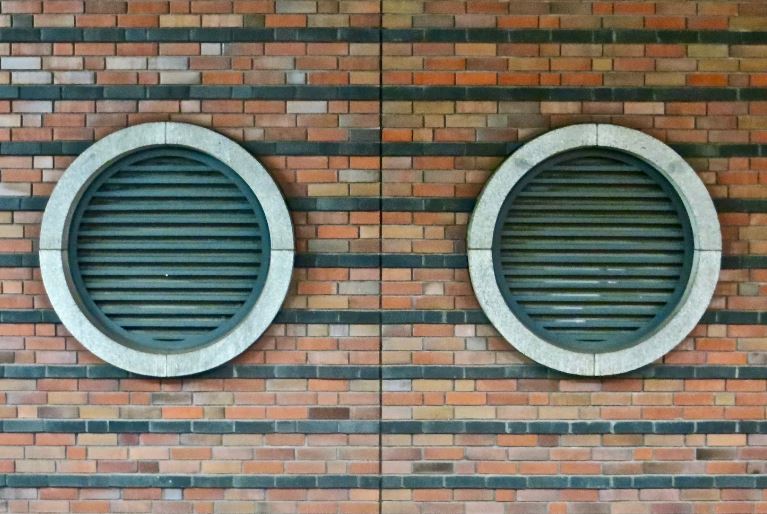Home ventilation is an essential component of a healthy and comfortable living environment. Good indoor air quality can help reduce allergens, pollutants, and airborne contaminants while providing fresh air to your home. Proper ventilation also helps improve energy efficiency and maintain temperatures in your home.
This blog post will discuss the importance of home ventilation as well as how to choose the right system for your needs. It’ll also look at the different types of ventilation systems and tips for proper installation. By the end, you will understand how to make sure your home is getting adequate ventilation. Let’s dive in!

There Have Been Many Advancements
There have been many advancements in home ventilation systems over the last few decades. Today, there is a wide range of options available to meet any needs, from energy-efficient heat recovery ventilators and exhaust fans to whole-house mechanical ventilation systems. When looking at smart vent products, you can choose from a variety of sensors, timers, and other features to customize your ventilation system. These advancements have made it easier than ever to find the right solution for any home and budget. Furthermore, many systems are now designed with low-noise operation in mind, which helps keep indoor noise levels low while maintaining optimum air quality.
Exhaust Only Ventilation
Exhaust Only Ventilation is a type of home ventilation system that works by exhausting stale air out of the home, while fresh air enters through natural infiltration. This form of ventilation can improve indoor air quality and reduce humidity levels in the home, as well as reduce energy costs associated with HVAC systems. Exhaust Only Ventilation can be an effective way to improve indoor air quality in a cost-effective manner. It is important to note that proper installation of this type of ventilation system is essential for it to work effectively.
Proper insulation and sealing around the exhaust fan can help maximize the efficiency of Exhaust Only Ventilation systems. Additionally, regular maintenance will ensure that the system operates at peak performance. With proper installation, maintenance, and use of an appropriate ventilation system, Exhaust Only Ventilation can be a cost-effective solution for improving indoor air quality.
Supply Only Ventilation
Supply-only ventilation is a form of home ventilation that helps to provide a continuous supply of fresh, filtered air into the home. This type of ventilation system operates by drawing in outside air and sending it through a filtration process to remove pollutants and other airborne particles before they are released into the living space. Supply-only systems also help to reduce indoor pollutants and maintain healthy levels of humidity.
The constant supply of fresh air can help to improve both the comfort and health of occupants while reducing energy costs associated with heating and cooling the home. In addition, due to their low maintenance requirements, they are a great choice for those looking for an economical solution.
These systems come in a variety of configurations and sizes, making it possible for homeowners to find the perfect solution for their homes. The installation process is relatively straightforward and does not require any major changes or renovations to the structure of the home. Installation can typically be completed within a day or two and requires minimal disruption.

Balanced Ventilation
Balanced ventilation is an energy-efficient way to regulate indoor air quality in the home. It uses two smaller, balanced streams of air for both intake and exhaust. The two streams are controlled by one central device, usually, a fan or motorized damper, that helps keep your indoor temperature comfortable while also controlling humidity levels and filtering out outside contaminants.
Balanced ventilation is a great way to improve indoor air quality without the high energy costs of traditional ventilation systems. It also helps reduce household allergens, mold, and other pollutants that can cause health problems. Additionally, balanced ventilation may be eligible for tax credits or other incentives depending on your location. In short, balanced ventilation is an affordable and efficient answer to improving air quality in your home.
Keep Your Budget In Mind
When it comes to home ventilation, budget is important. There are many options available for improving your home’s air quality, but not all of them will be affordable for everyone. Think carefully about the different types of systems and technologies that are out there, and make sure you weigh up what fits best with your finances before making any decisions.
Consider the installation, running costs, and maintenance too, as these can all add up. Don’t forget to research any available discounts or incentives, such as tax credits. Doing this kind of planning beforehand will help you save money in the long run. By being strategic about your budget before making a commitment, you can ensure that you make the most of a home ventilation system.
There are many different types of home ventilation systems available, each with its own advantages and disadvantages. By understanding the various options out there, you can make an informed decision that will provide your family with healthy air quality while also staying within your budget. With the right system in place, you can enjoy fresh air in your home without having to break the bank.






